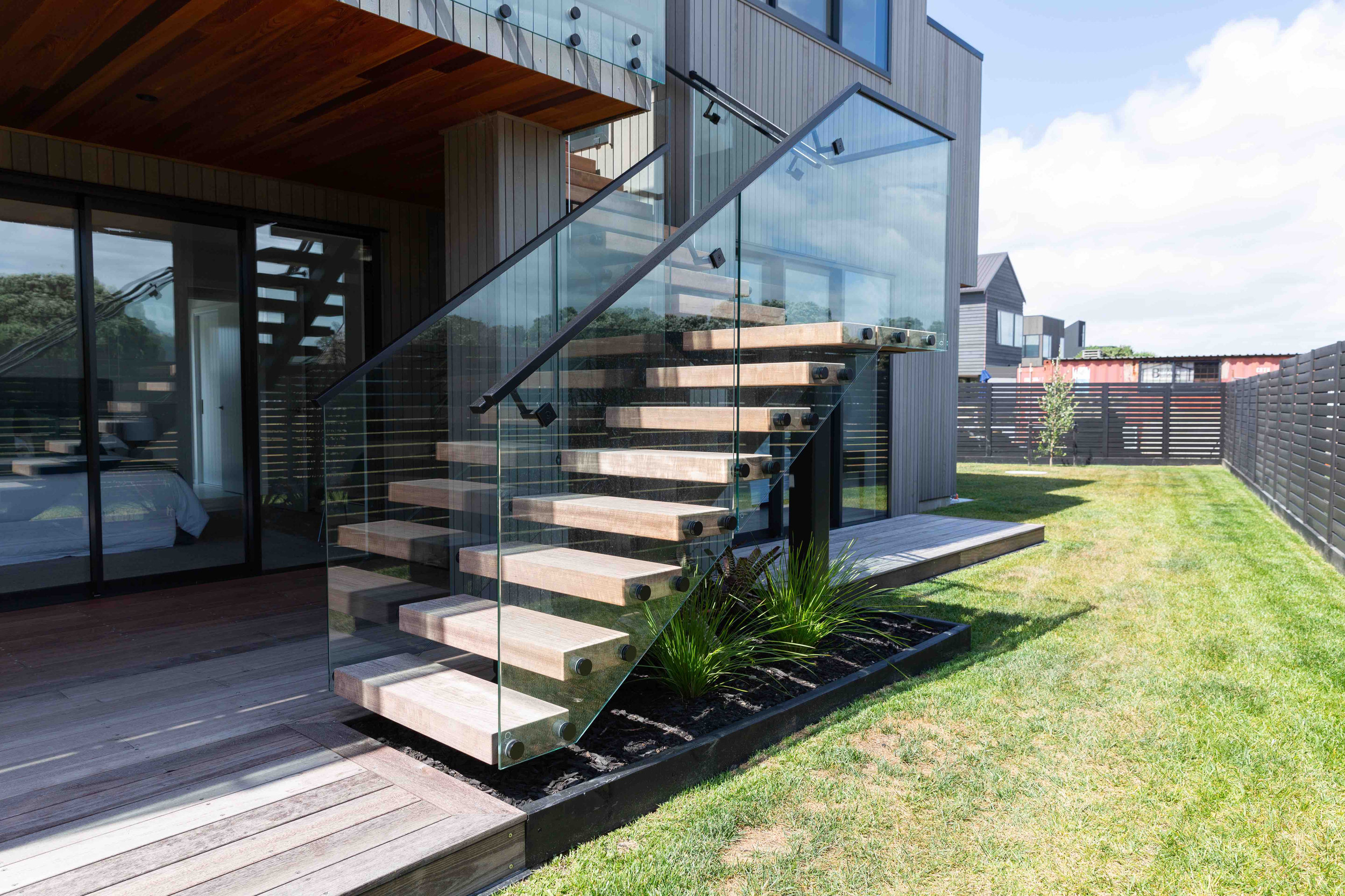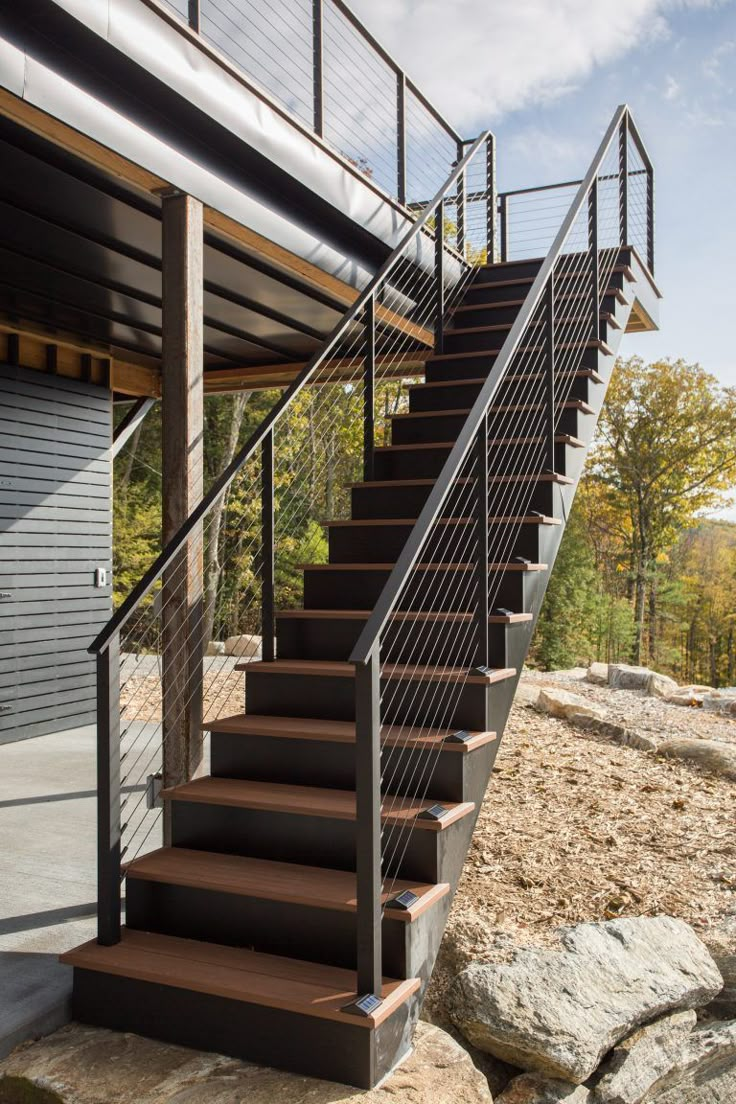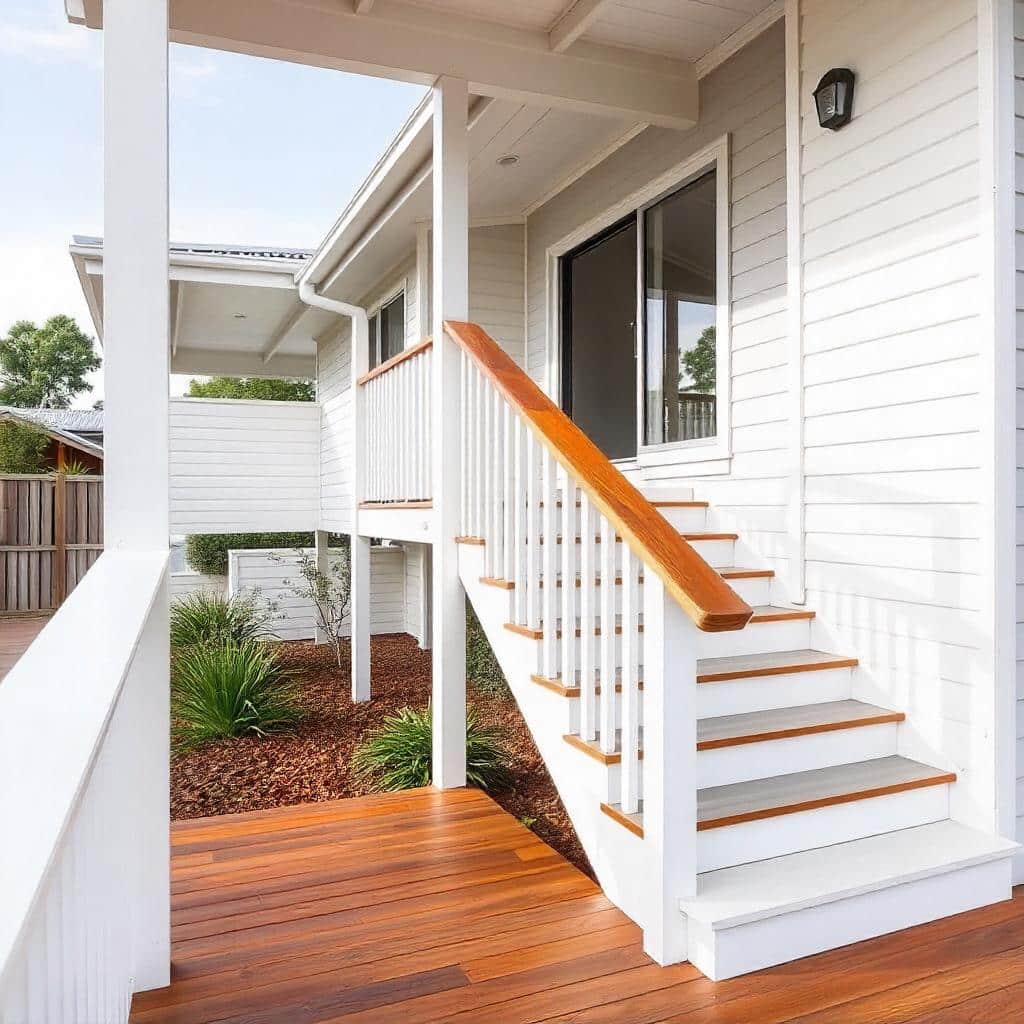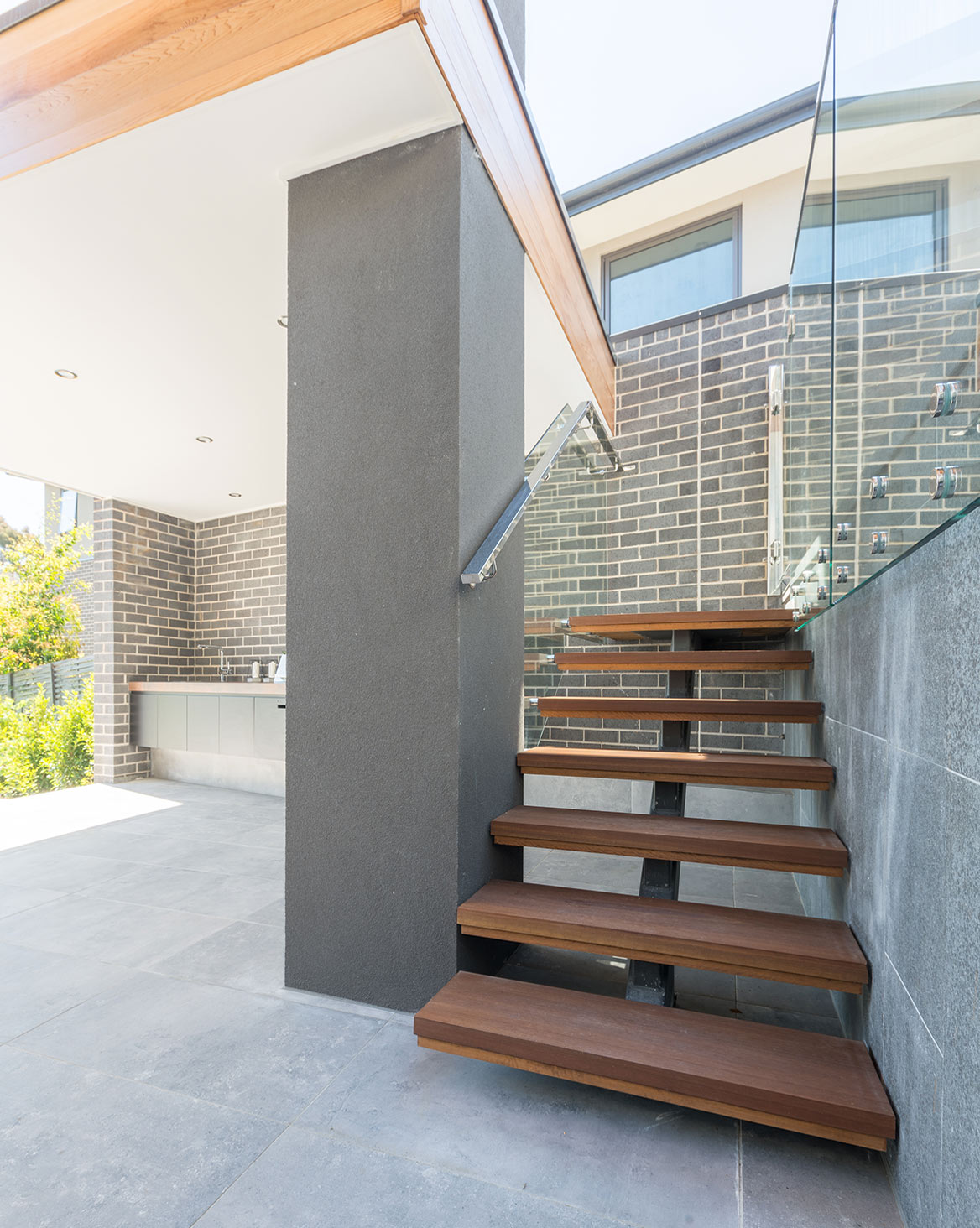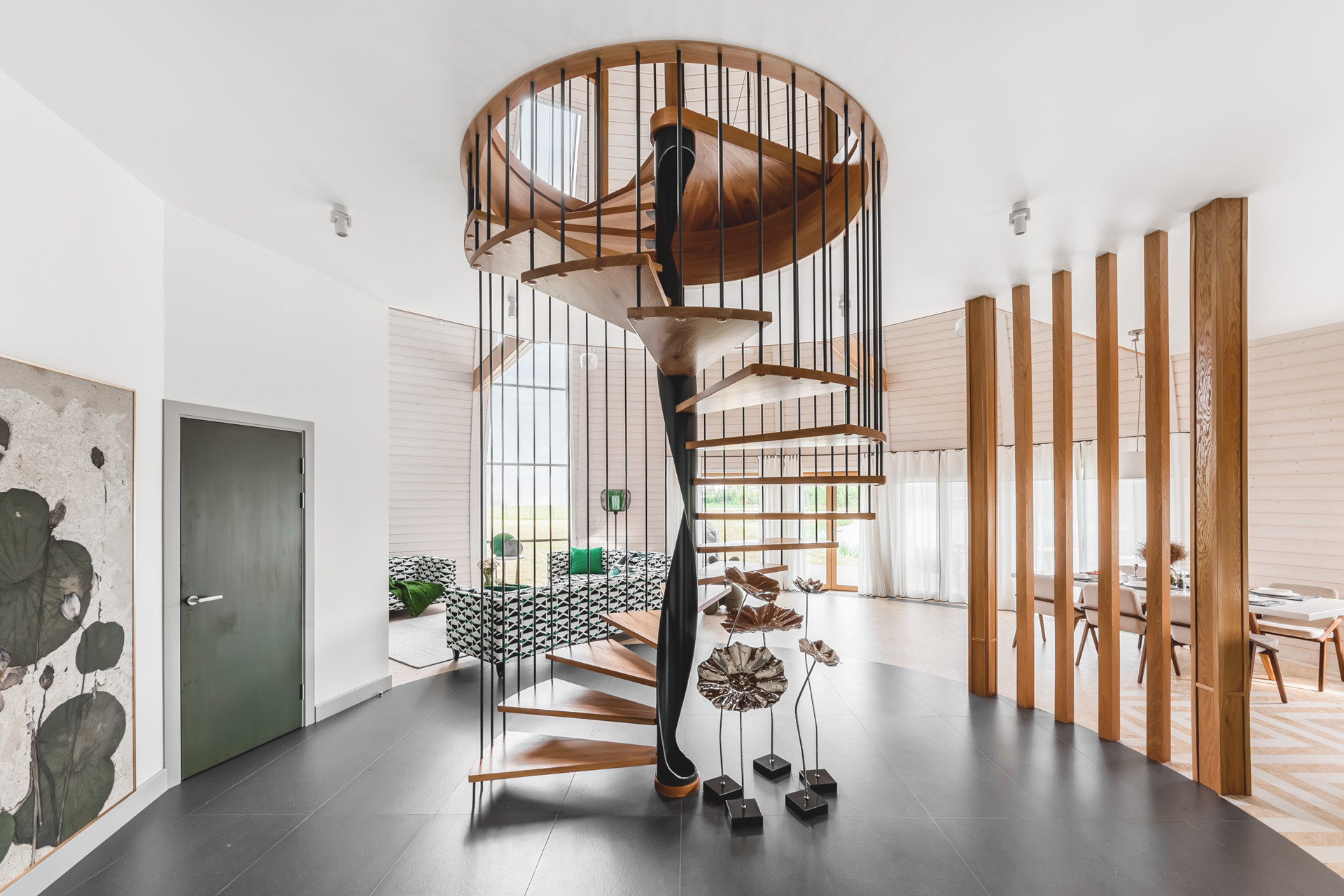Creating timber stairs in your outdoor area is indeed a brilliant idea. More than just a functional element, a well-crafted Outdoor timber stairs design can completely redefine the aesthetic appeal and usability of your home’s exterior. Whether you’re working with a sloped garden, deck, or patio space, the inclusion of beautifully designed outdoor stairs creates not only better access but also an elegant visual transition between different levels of your yard.
With thoughtful planning, the right materials, and a design that complements your home’s architecture, you can transform a simple staircase into a standout feature. Let’s dive into the most compelling styles, functionality tips, and smart upgrades you can use to make your Outdoor timber stairs design both visually captivating and practically valuable.
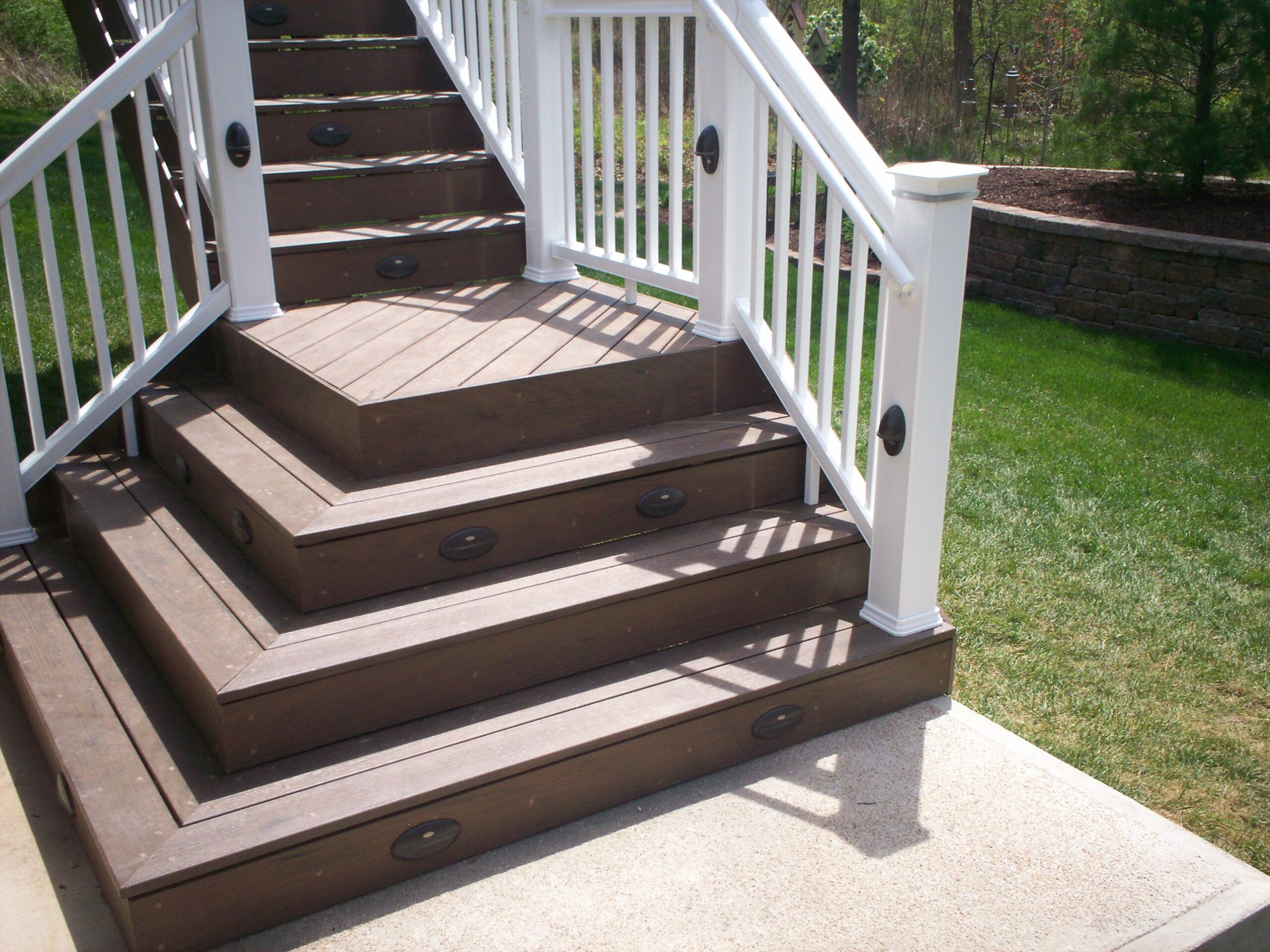
Maximizing Functionality and Style with Outdoor Timber Stairs
When choosing an Outdoor timber stairs design, don’t just consider appearance—think holistically about how these stairs will function. A staircase should feel like a natural part of your yard’s layout. Whether it’s leading from your deck to a grassy area or connecting your patio to a lower garden level, stairs can define movement and structure across your space.
A thoughtful Outdoor timber stairs design blends form and function. The right design maximizes available space, offers safe passage between areas, and—when well executed—becomes a focal point in your outdoor décor. It’s more than just steps; it’s an architectural transition that welcomes guests, directs foot traffic, and frames views in a picturesque way.
The Outdoor Timber Stairs with Storage: Practicality Meets Rustic Charm
One of the most in-demand innovations in Outdoor timber stairs design is integrated storage. Imagine lifting a stair tread to find neatly hidden compartments filled with gardening tools, pool supplies, or firewood. This is functionality and rustic beauty in one.
These storage staircases offer significant convenience, especially in smaller outdoor areas where space-saving features are essential. For homes that lean into natural or farmhouse aesthetics, the blend of timber textures and concealed storage compartments enhances the overall visual experience.
When implementing this type of Outdoor timber stairs design, use durable hardwoods like cedar or pressure-treated pine. These materials are naturally resistant to decay and work beautifully with stains or paints. Opt for simple, clean lines or a more detailed look with paneling or shaker-style finishes, depending on the theme of your home’s exterior.
Not only does this solution serve as a visual highlight, but it also helps eliminate clutter from your outdoor space. You can store hoses, gardening gloves, seasonal decorations, or even barbecue tools, all within arm’s reach. Add latching lids or lockable doors for security, and ensure adequate waterproofing to protect your stored items.
To amplify charm and protect the wood, many homeowners apply weather-resistant white paint or a soft neutral stain. These finishes elevate the rustic character of your Outdoor timber stairs design while preventing water damage and sun bleaching.
The Outdoor Timber Stairs with Lights: Illuminating Your Path with Elegance
A dazzling yet functional addition to any Outdoor timber stairs design is integrated lighting. Lighting not only improves visibility and safety during the evening hours but also casts a soft, welcoming glow that highlights the craftsmanship of your stairs.
Well-placed lighting transforms your outdoor stairs into a dramatic architectural feature. Consider low-profile LED strip lighting under stair treads, solar-powered riser lights, or warm up-lights set along the base of each step. You might even integrate lighting into handrails or along the path leading to the stairs.
When it comes to color temperature, warm white lighting (2700–3000K) provides a cozy, inviting feel. If your home has a modern or contemporary design, you might opt for cool white or even color-changing RGB LED lights to create dynamic effects.
From a safety perspective, stair lighting helps prevent tripping and slipping, especially in rain or after sunset. For inspiration, check out lighting integration examples on Houzz’s outdoor stairs gallery.
This modern take on Outdoor timber stairs design not only ensures safety but also adds a polished, luxurious feel to your property. With solar-powered lighting options available, you can achieve this look without wiring headaches or high utility bills.
Beyond the Basics: Expanding Your Outdoor Timber Stairs Design Horizons
Designing outdoor stairs involves more than just picking a shape or material. It’s about creating harmony between design, usage, and environment. To take your Outdoor timber stairs design to the next level, you’ll want to factor in materials, surrounding layout, and long-term maintenance strategies.
Choosing the Right Wood for Durability and Aesthetics in Outdoor Timber Stairs Design
One of the most critical factors that determines the success and longevity of your Outdoor timber stairs design is your choice of wood. Timber stairs in an outdoor setting must endure a variety of environmental challenges, including intense sunlight, heavy rain, high humidity, freezing temperatures, and pest activity. Therefore, durability, appearance, workability, and maintenance requirements are all essential considerations when selecting the right type of wood for your project.
Incorporating the right wood doesn’t just ensure structural integrity—it also plays a defining role in your stairway’s visual appeal. The grain, color, and finish of the wood can significantly influence the overall aesthetic of your Outdoor timber stairs design, complementing your exterior architecture and landscape design.
Let’s explore in greater detail the top-performing wood types that professionals and homeowners alike use to create beautiful and durable Outdoor timber stairs design solutions.
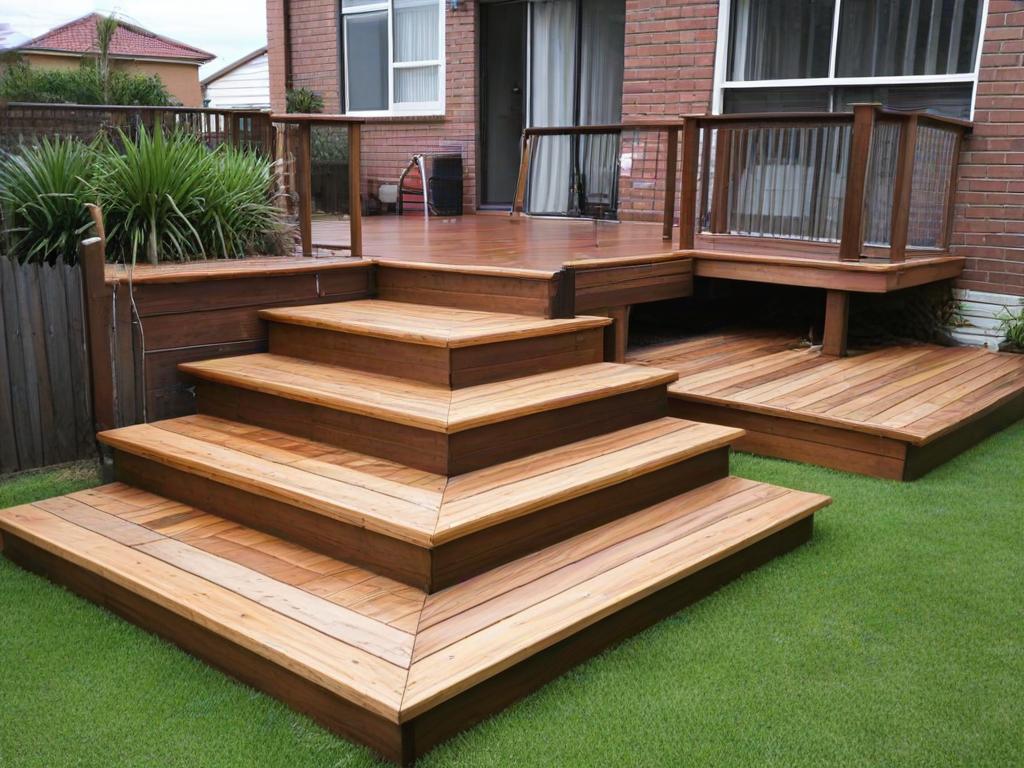
Cedar: The Natural Choice for Elegant and Low-Maintenance Stairs
Cedar is often the first wood that comes to mind when discussing outdoor projects—and for good reason. This softwood is naturally rich in oils and resins that make it highly resistant to moisture, decay, and insect damage. That makes it an excellent choice for any Outdoor timber stairs design, particularly in regions with high rainfall or coastal humidity.
Pros:
-
Lightweight and easy to work with during construction.
-
Beautiful reddish-brown color with a distinctive grain pattern.
-
Doesn’t warp or swell easily, even in damp conditions.
-
Naturally pest-resistant, especially against termites.
Cons:
-
Softer than hardwoods, making it more prone to scratches and dents.
-
Requires regular sealing or staining to maintain its color and strength.
If you choose cedar for your Outdoor timber stairs design, consider applying a UV-blocking clear sealant every 1–2 years to maintain its fresh appearance and extend its lifespan. Cedar pairs especially well with traditional, rustic, or farmhouse-style exteriors.
Redwood: Luxurious Appeal for High-End Outdoor Timber Stairs Design
Redwood is a premium wood often chosen for upscale Outdoor timber stairs design projects thanks to its natural beauty and outstanding weather resistance. Like cedar, redwood contains tannins that offer strong protection against rot and insects.
Pros:
-
Deep, rich red tones and fine grain create a luxurious look.
-
High resistance to moisture, mold, and mildew.
-
Shrinks less than most woods, reducing the risk of warping or cracking.
-
Ages gracefully to a silvery patina if left untreated.
Cons:
-
Expensive and less readily available in some regions.
-
Sustainability concerns unless sourced from managed forests.
Redwood is perfect if you want your Outdoor timber stairs design to stand out as a statement feature in your garden or backyard. For environmentally conscious homeowners, look for redwood certified by the Forest Stewardship Council (FSC) to ensure responsible sourcing.
Pressure-Treated Pine: Affordable and Widely Accessible
Pressure-treated pine remains one of the most commonly used materials for Outdoor timber stairs design due to its affordability and availability. It undergoes a chemical treatment process that helps resist rot, decay, and insect attacks.
Pros:
-
Budget-friendly and widely available across most hardware stores.
-
Treated to withstand moisture and insect damage.
-
Can be stained or painted to suit any design style.
Cons:
-
Has a greenish tint when new (due to treatment chemicals).
-
Requires regular maintenance, including sealing and staining.
-
Can crack, split, or warp over time if not properly maintained.
To extend the life of your pressure-treated pine stairs, it’s crucial to seal the wood within 30 to 60 days of installation. Be sure to use fasteners and hardware that are approved for use with treated lumber, as the chemicals can corrode standard screws and nails over time. This wood type is ideal for homeowners looking to implement a reliable yet cost-effective Outdoor timber stairs design without compromising too much on longevity.
Teak and Ipe: Premium Hardwood Options for Ultimate Durability
If budget is less of a concern and you’re aiming for top-tier performance and elegance, hardwoods like teak and ipe (pronounced “ee-pay”) are unmatched in their ability to withstand outdoor elements. These woods are frequently used in luxury decks, yachts, and high-end Outdoor timber stairs design installations.
Teak Pros:
-
High oil content makes it naturally water-resistant.
-
Resists warping, rotting, cracking, and termite attacks.
-
Stunning golden-brown hue with tight grain.
Ipe Pros:
-
Known as “ironwood” for its extreme density and durability.
-
Incredibly resistant to rot, abrasion, fire, and pests.
-
Can last 25–40 years with minimal upkeep.
Cons (Both):
-
Expensive and heavy, making installation more labor-intensive.
-
Requires pre-drilling for fasteners.
-
May gray over time if not sealed or oiled regularly.
Both teak and ipe make an incredible impact when used in Outdoor timber stairs design, particularly for contemporary, tropical, or coastal themes. These hardwoods are also ideal for public or commercial spaces where foot traffic is heavy and aesthetics are essential.
Thermally Modified Wood: Sustainable and Stable Innovation
Thermally modified wood is a relatively new entrant in the outdoor wood market, offering excellent dimensional stability and resistance to decay. Through a process that involves heating the wood in a low-oxygen environment, its moisture content and hemicellulose are reduced, making it less appealing to fungi and pests.
Pros:
-
Eco-friendly alternative to chemically treated wood.
-
Highly stable and resistant to warping or swelling.
-
A natural, rich brown tone that resembles tropical hardwoods.
Cons:
-
Still gaining popularity, so availability may be limited.
-
Some types may be brittle if overexposed to intense sunlight without sealing.
Ideal for modern and sustainable Outdoor timber stairs design projects, thermally modified wood combines innovation and style. It offers a compelling middle ground between affordability and premium hardwood durability while staying free from chemical preservatives.
Free Tip: Composite Wood Alternatives
While not technically timber, many homeowners exploring Outdoor timber stairs design also consider composite decking materials. These are typically made from a blend of wood fibers and recycled plastics and come in various colors and grain patterns.
Pros:
-
Extremely low maintenance—no staining, sanding, or sealing needed.
-
Long-lasting and resistant to fading, moisture, and pests.
-
Uniform appearance and consistent color.
Cons:
-
Less natural-looking than real wood.
-
Can become slippery when wet.
-
Higher upfront cost than pressure-treated pine.
If natural timber isn’t feasible due to maintenance or cost concerns, composite materials can still offer an attractive and durable alternative for your Outdoor timber stairs design goals.
Best Practices for Wood Selection and Protection
Regardless of the type of wood you choose, proper finishing and protection are essential to maintaining the structural and visual integrity of your Outdoor timber stairs design.
Essential protection tips:
-
Use high-quality sealants with UV and moisture resistance.
-
Apply deck stains or waterproof coatings regularly.
-
Clean the stairs seasonally to prevent mold or algae buildup.
-
Use stainless steel or coated fasteners to prevent rust and corrosion.
For DIYers, always refer to manufacturer guidelines or expert advice before sealing or treating your timber. For professional-level results, consult with a contractor or specialist in Outdoor timber stairs design to select the right wood, treatment, and installation method.
In conclusion, your choice of timber plays a foundational role in achieving the perfect Outdoor timber stairs design. Whether you’re going for rustic charm, modern luxury, or budget-friendly durability, selecting the right wood ensures long-term success and stunning curb appeal. By weighing aesthetics, climate compatibility, maintenance requirements, and budget, you can confidently choose the ideal material for a staircase that’s both beautiful and built to last.
Considering the Design and Layout of Your Outdoor Space
The layout and slope of your property will largely influence the design of your outdoor staircase. Straight stairs are easy to construct and suit most backyards. However, if you have limited space or want to enhance visual flow, L-shaped stairs or switchbacks with landings can add architectural drama and better ergonomics.
Your Outdoor timber stairs design should enhance—not interrupt—the natural flow of your yard. Align your staircase with existing walkways, focal points (like a gazebo or garden bed), and elevation changes. Ensure there’s adequate lighting, room for handrails, and natural drainage to avoid pooling water.
In tighter spaces, consider spiral or narrow-width stairs that maximize movement without overwhelming the area. Conversely, wider steps with deeper treads create a grand, welcoming look that suits large decks and terraces.
Ensuring Safety with Proper Construction and Features
Every beautiful Outdoor timber stairs design must also meet safety standards. Uneven treads, wobbly rails, or poor lighting can create serious hazards.
Follow these key safety tips:
-
Maintain consistent rise/run measurements (e.g., 7″ rise, 11″ tread).
-
Install sturdy handrails on at least one side (preferably both).
-
Add non-slip tread strips or texture treatments, especially in wet climates.
-
Anchor your stair base in concrete footings to prevent shifting.
-
Use galvanized or stainless steel hardware to resist rust.
If you’re building yourself, consult your local building code office or hire a licensed contractor to ensure your stairs meet all regulations.
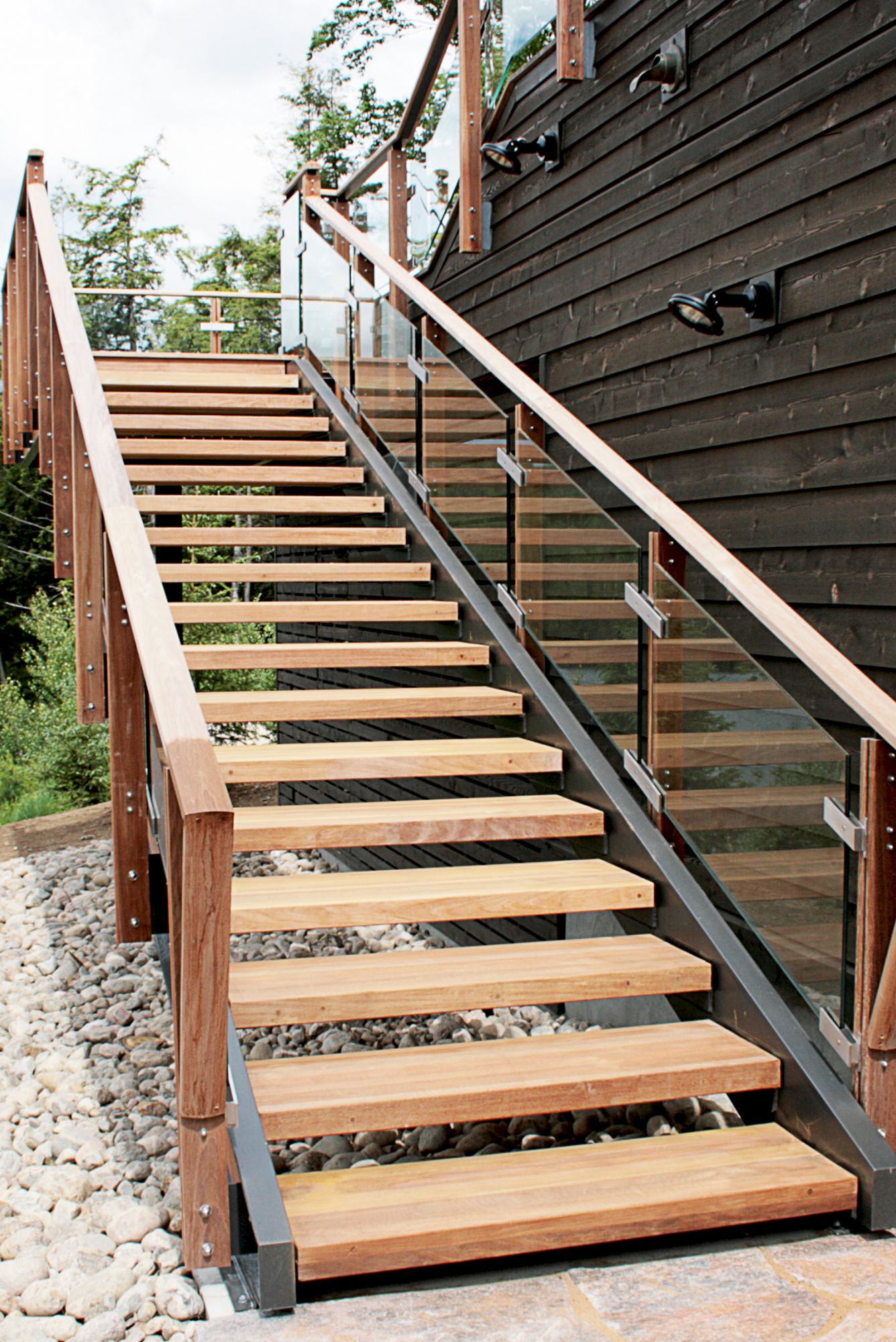
Maintaining Your Outdoor Timber Stairs for Longevity
Maintaining your Outdoor timber stairs design is not just a recommendation—it’s an essential responsibility if you want to preserve their safety, durability, and visual charm for many years to come. Timber, as a natural material, reacts to environmental exposure over time. Without the right upkeep, even the most beautifully crafted Outdoor timber stairs design can deteriorate due to moisture, UV rays, mold, insects, or general wear and tear.
Investing time into regular maintenance will ensure that your timber stairs remain structurally sound and aesthetically pleasing. Moreover, a well-maintained outdoor staircase significantly enhances your property’s curb appeal and overall value, which is especially important if you plan to sell or rent your home in the future.
Below is a comprehensive maintenance routine tailored to protecting and prolonging the life of your Outdoor timber stairs design—whether you live in a humid coastal zone, a dry inland region, or a four-season climate with fluctuating temperatures.
1. Regular Cleaning: Keep Your Timber Stairs Free from Dirt and Debris
One of the most basic, yet often overlooked, steps in caring for your Outdoor timber stairs design is routine cleaning. Accumulated dirt, dust, leaves, and algae can trap moisture and promote wood decay, particularly in shaded or damp areas.
Cleaning tips:
-
Sweep your stairs weekly to prevent organic buildup.
-
Every 2–3 months, wash them with a gentle wood-safe detergent mixed with warm water.
-
Use a stiff-bristled scrub brush to remove dirt from grain patterns and edges.
-
For algae or mildew, mix one part white vinegar with three parts water, or use a specialized outdoor wood cleaner.
-
Rinse thoroughly using a garden hose—avoid high-pressure washers unless you’re experienced, as they can splinter the wood.
Cleaning helps restore the original color and texture of the wood and prevents slippery surfaces that pose safety risks.
2. Conducting Inspections: Spot and Fix Problems Early
Frequent inspections are vital to catching early signs of deterioration in your Outdoor timber stairs design. These evaluations should be done at least once per season and more often in areas with harsh weather or heavy use.
Inspection checklist:
-
Look for cracked or splintered treads.
-
Examine for soft spots or discoloration, which could indicate rot or mold.
-
Check handrails and balusters for stability and secure attachments.
-
Inspect fasteners like nails, screws, or brackets for rust, looseness, or corrosion.
-
Make sure no boards have warped or shifted, especially near the base or joints.
Timely repairs, even minor ones, can prevent costly replacements or safety hazards down the road. Replace damaged boards, tighten hardware, and re-secure any loose structural components.
3. Sealing and Staining: The Ultimate Defense Against Weather
One of the most effective ways to protect your Outdoor timber stairs design is by applying a high-quality sealant or stain. This helps to block water absorption, shield the wood from UV rays, and reduce the risk of rot, mold, or fading.
Sealant and staining tips:
-
Choose a product specifically labeled for exterior timber applications.
-
Transparent sealants preserve the natural wood look, while tinted stains offer both color and protection.
-
For high-traffic areas, select a semi-transparent or solid-color stain with added UV filters and mildew-resistant properties.
-
Apply during dry, mild weather—ideally when the temperature is between 50°F and 80°F.
-
Reapply every 12–24 months, depending on the level of exposure and the type of wood.
Staining or sealing your stairs is a vital part of Outdoor timber stairs design maintenance that directly extends their lifespan and enhances their overall finish. For areas that receive intense sun exposure or frequent rain, consider sealing annually to prevent early wood degradation.
4. Sanding and Recoating: Keep Painted Timber Stairs Looking Fresh
If your Outdoor timber stairs design includes painted surfaces, periodic sanding and repainting will be necessary to maintain a clean and vibrant appearance. Over time, paint can peel, blister, or fade due to temperature fluctuations and UV exposure.
Sanding & recoating guidelines:
-
Lightly sand painted surfaces every 2–3 years to remove flaking areas and smooth the surface.
-
Use 80–120 grit sandpaper for the best balance between removal and surface prep.
-
Wipe clean and apply a new coat of outdoor-rated paint or primer+paint combo.
-
Choose paints with weatherproof and mold-resistant formulations for timber.
In addition to boosting aesthetics, repainting protects the timber underneath from moisture infiltration and UV damage. A fresh coat of paint also reinforces your chosen Outdoor timber stairs design aesthetic, whether modern minimalist, traditional, or coastal chic.
5. Seasonal Adjustments: Adapt Maintenance to Weather Extremes
The level of attention your Outdoor timber stairs design requires can change dramatically depending on your location and season. Adapting your maintenance schedule to suit the climate is crucial for optimal preservation.
Seasonal tips:
-
Spring: Clean debris from under stairs and apply a fresh coat of sealant or stain before the wet season.
-
Summer: Check for sun damage, repaint faded areas, and ensure proper ventilation around the base of your stairs.
-
Fall: Remove fallen leaves regularly to prevent moisture retention and mold.
-
Winter: Clear snow promptly using a plastic shovel (not metal), and avoid using salt-based deicers that can damage timber.
These seasonal adjustments ensure that your Outdoor timber stairs design remains protected and visually appealing all year long.
6. Upgrading Hardware: Replace Old Fasteners for Maximum Safety
Over time, the screws, nails, bolts, and brackets used in your Outdoor timber stairs design can rust or degrade, especially if exposed to moisture or harsh chemicals. Replacing outdated or corroded hardware is essential for safety and structural integrity.
Recommended hardware upgrades:
-
Use hot-dipped galvanized, stainless steel, or coated exterior-grade fasteners.
-
Avoid mixing metal types, which can lead to galvanic corrosion.
-
Upgrade to concealed fasteners or decking clips for a cleaner appearance and better longevity.
High-quality fasteners help keep all stair components securely in place, reducing the risk of movement or collapse over time.
7. Pest Prevention: Protecting Timber from Termites and Insects
Wood-boring insects, especially termites and carpenter ants, can silently destroy even the most solid Outdoor timber stairs design. Preventive action is far easier and cheaper than remediation after an infestation.
Pest prevention tips:
-
Apply a borate-based wood preservative before sealing or staining.
-
Keep stair edges and underneath areas dry and well-ventilated.
-
Remove vegetation touching the stairs—this creates a bridge for pests.
-
Conduct regular inspections for bore holes, sawdust trails, or sagging boards.
-
Use treated lumber or naturally pest-resistant wood like teak, ipe, or cedar.
Consider installing mesh screens under stairs or in open risers to block rodent or insect entry into enclosed spaces.
8. Long-Term Renovation: Refreshing Your Outdoor Timber Stairs Design
After 8–10 years of wear, you might consider updating your Outdoor timber stairs design with a full renovation. This could involve replacing treads, switching wood species, updating the style of railings, or integrating lighting and smart technology.
Enhancement ideas:
-
Add motion-sensor LED lights to risers or handrails.
-
Replace open risers with closed ones for added safety and visual mass.
-
Swap in composite treads for lower maintenance while keeping timber framing for aesthetics.
-
Upgrade to floating or cantilevered stair designs for a modern architectural statement.
Regular renovation keeps your outdoor space current, safe, and aligned with your evolving home design preferences.
Why Maintenance Matters in Outdoor Timber Stairs Design
In conclusion, routine maintenance is the heartbeat of any long-lasting and beautiful Outdoor timber stairs design. It prevents premature aging, ensures safety for you and your guests, and keeps your home exterior visually stunning. Whether you’re dealing with mild wear or extreme weather impacts, following these comprehensive care practices will protect your investment and keep your outdoor stairs in top condition year after year.
By embracing regular inspections, applying proper treatments, and upgrading where needed, you can enjoy the timeless appeal of timber in your outdoor environment while avoiding costly repairs or replacements.
More Info
- Linking to a resource discussing the advantages of timber stairs.
- Smart Stair Floor Plan Ideas to Fit Your House Size

Conclusion: Crafting Your Perfect Outdoor Ascent with Timber
A well-thought-out Outdoor timber stairs design can elevate your home’s style, improve outdoor functionality, and provide years of enjoyment. From stylish storage staircases to illuminated showpieces, the possibilities are endless.
Take your time selecting a design that aligns with your landscape and lifestyle. Whether you’re drawn to rustic charm or modern elegance, timber stairs offer a warm, versatile foundation for your outdoor dreams.
So don’t settle for basic concrete steps or uninspired decking. Invest in an Outdoor timber stairs design that will leave a lasting impression—on both your guests and your property value.

